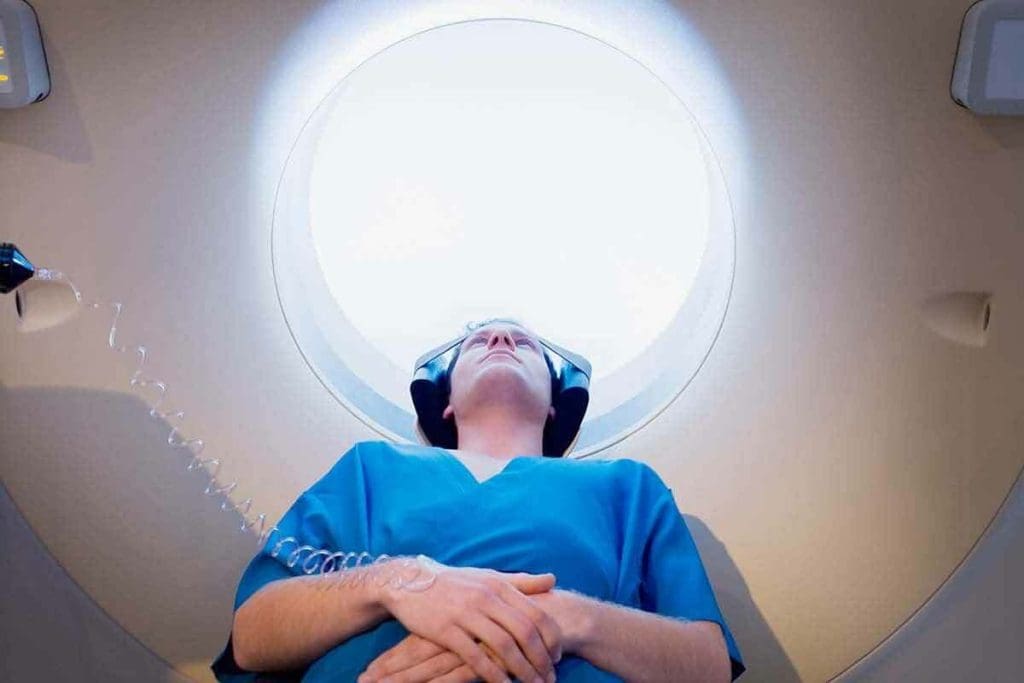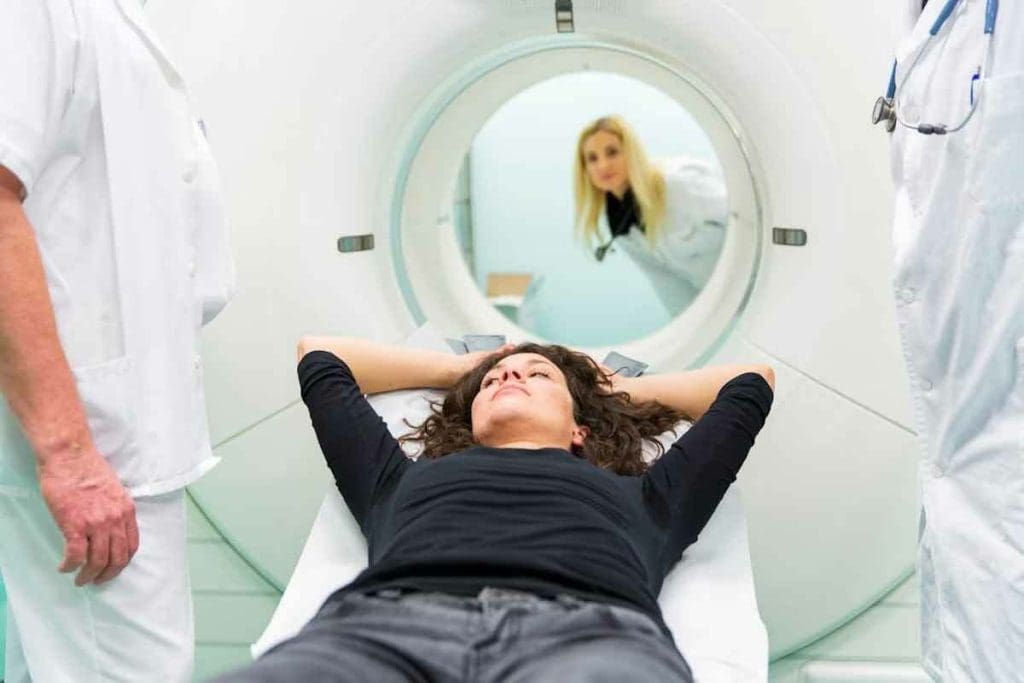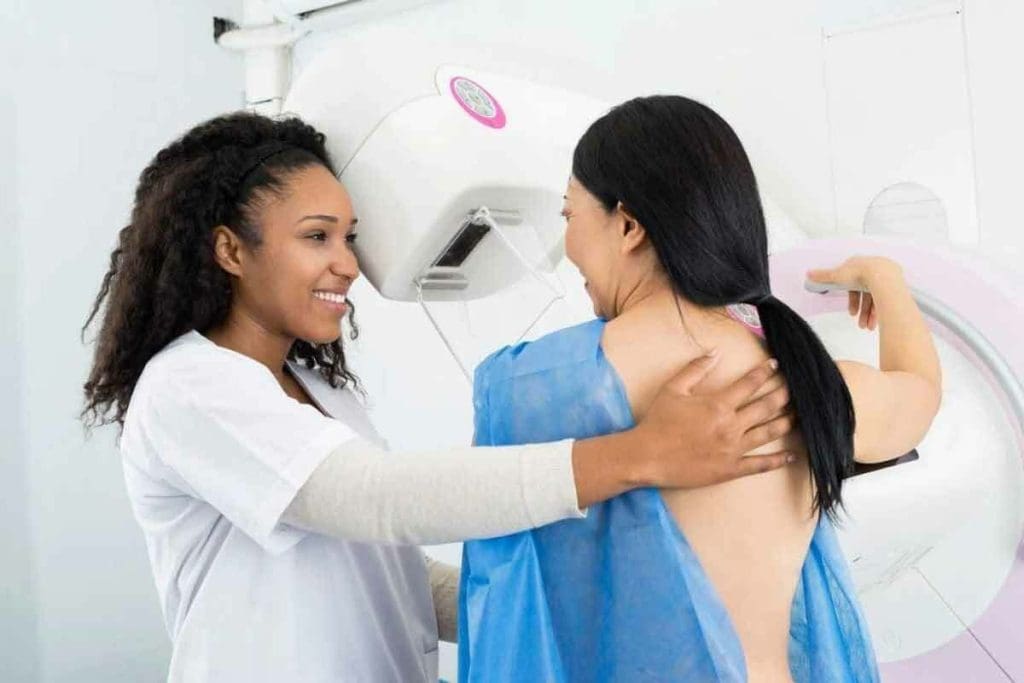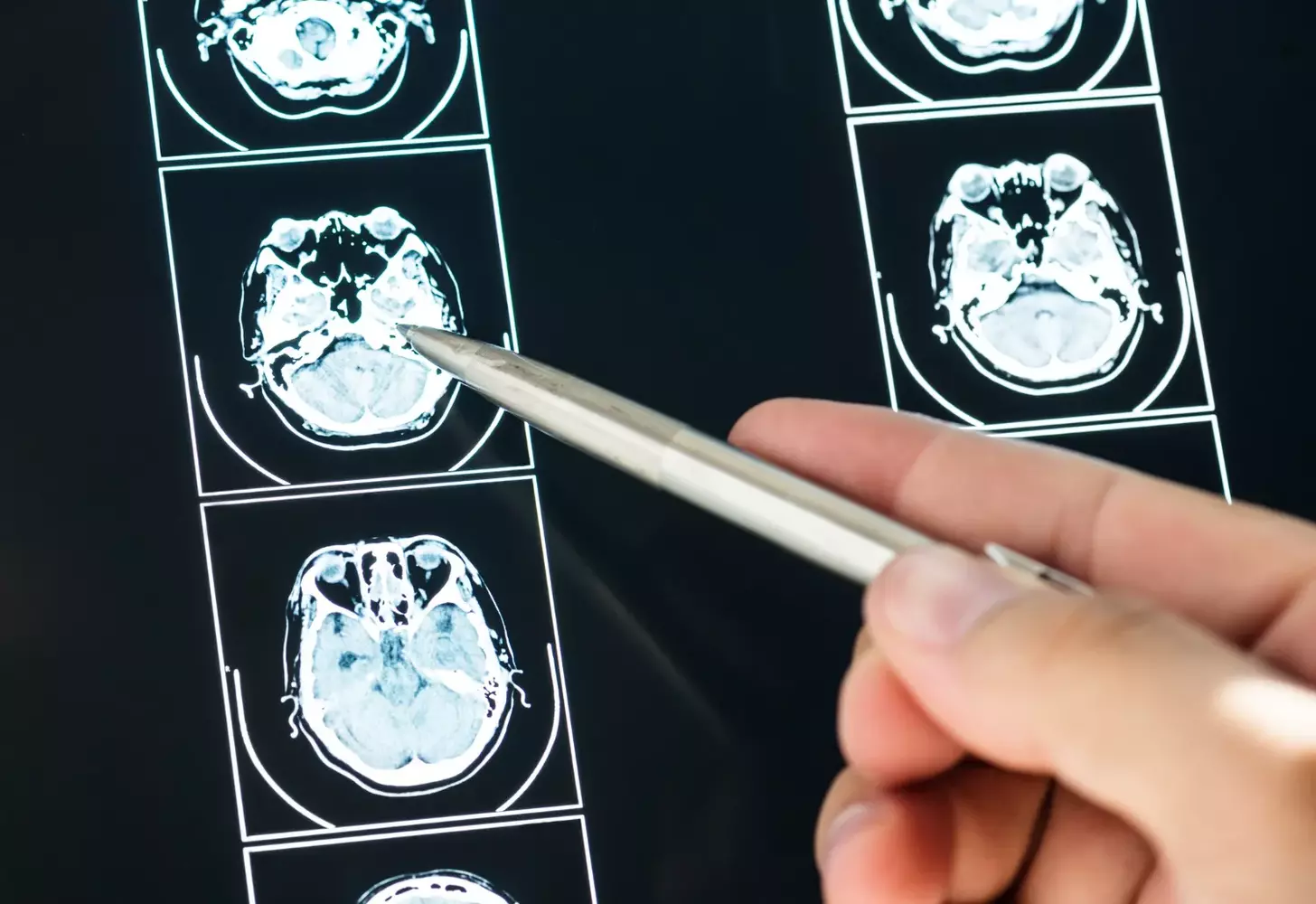Last Updated on November 27, 2025 by Bilal Hasdemir

Diagnosing Parkinson’s disease can be tough because its symptoms look like other movement disorders. A DaTscan, or dopamine transporter scan, is a special imaging test. It shows and counts dopamine transporter activity in the brain.
At Liv Hospital, we use the latest DaTscan technology for accurate diagnoses. This test involves injecting a radioactive tracer, Ioflupane (123I), into the bloodstream. It then builds up in the brain, allowing for clear images of dopamine transporter activity.
By using DaTscan technology, we can tell Parkinson’s disease apart from other movement disorders. This helps us create better treatment plans and improve patient results.
Key Takeaways
- DaTscan is a specialized imaging test used to diagnose Parkinson’s disease.
- It involves injecting a radioactive tracer into the bloodstream to visualize dopamine transporter activity.
- DaTscan helps distinguish Parkinson’s disease from other movement disorders.
- Liv Hospital utilizes advanced DaTscan technology for accurate diagnoses.
- Effective diagnosis enables more targeted treatment plans and improved patient outcomes.
What Is a Dopamine Scan and Why It’s Used

DaTscan imaging is a key tool in neurology, mainly for checking patients with suspected Parkinson’s disease. It uses a radioactive tracer and SPECT imaging to spot the loss of dopamine neurons. This is a key sign of Parkinson’s syndrome.
Definition and Purpose of DaTscan Imaging
DaTscan, or dopamine transporter scan, is a nuclear medicine test for diagnosing Parkinson’s disease and other Parkinsonian syndromes. It aims to see dopamine transporters in the brain. These proteins help take dopamine back into neurons.
By looking at these transporters, doctors can understand the health of the dopamine system.
The Role of Dopamine Transporters in Parkinson’s Disease
Dopamine transporters control dopamine levels in the brain. In Parkinson’s, the loss of these neurons reduces dopamine production. This leads to the disease’s motor symptoms.
DaTscan imaging binds to these transporters, showing how many neurons are left. This helps in understanding the disease’s progression.
Differentiating Between Movement Disorders
Diagnosing Parkinson’s disease can be tricky, as it looks similar to other movement disorders like essential tremor. DaTscan imaging is very helpful here. It can tell apart these conditions by showing if there’s a loss of dopamine neurons.
| Condition | DaTscan Result | Clinical Implication |
| Parkinson’s Disease | Abnormal | Indicates loss of dopaminergic neurons |
| Essential Tremor | Normal | Suggests no significant dopaminergic neuron loss |
| Other Parkinsonian Syndromes | Abnormal | May indicate neurodegenerative conditions |
When Doctors Recommend a DAT Test for Parkinson’s

Doctors might suggest a DAT test if patients show early signs of Parkinson’s. Catching the disease early is key to managing symptoms and improving life quality.
Early Symptoms That Warrant Testing
Doctors often suggest a DAT test for early signs of Parkinson’s. These signs include tremors, stiffness, slow movements, and balance issues. Early diagnosis is essential for effective treatment.
Some early symptoms that might need testing are:
- Tremors or shaking, even when not moving
- Feeling stiff or slow
- Difficulty with balance or coordination
- Changes in speech or writing
Distinguishing Parkinson’s from Essential Tremor
Doctors use a DAT test to tell Parkinson’s apart from essential tremor. Essential tremor is usually harmless and happens when moving or holding a posture. Parkinson’s, on the other hand, often shows tremors when not moving.
| Characteristics | Parkinson’s Disease | Essential Tremor |
| Tremor Type | Typically at rest | During action or with posture |
| Other Symptoms | Slowness, stiffness, balance issues | Usually isolated to tremors |
| DAT Test Result | Abnormal dopamine transporter density | Normal dopamine transporter density |
Limitations in Clinical Diagnosis Without Imaging
Diagnosing Parkinson’s without a DAT scan can be tough. A DAT test provides valuable information about dopamine levels in the brain. This helps doctors confirm or rule out Parkinson’s.
The diagnostic process can be complex and sometimes uncertain. The DAT test is a helpful tool for doctors to make accurate diagnoses and plan treatments.
The Science Behind the DAT SPECT Test
The DAT SPECT test is a complex tool that uses radioactive tracers. It checks the health of brain cells that make dopamine. This test is key in diagnosing Parkinson’s disease and similar conditions.
How Radioactive Tracers Bind to Dopamine Transporters
The DAT test for Parkinson’s works by using radioactive tracers. These tracers attach to dopamine transporters on brain cells. Dopamine transporters help control dopamine levels in the brain.
In Parkinson’s, brain cells that make dopamine die off. This means fewer dopamine transporters are available. The test uses a special tracer to find these transporters.
This tracer helps show how many dopamine transporters are in the brain. It focuses on the striatum, an area that gets dopamine from other brain cells.
Single-Photon Emission Computed Tomography Technology
SPECT is a way to see inside the body using special cameras. It helps find where dopamine transporters are in the brain. This is done by detecting gamma rays from the tracer.
The SPECT scanner makes a 3D image of the brain. This image shows where dopamine transporters are. It helps doctors see how many brain cells are lost.
Visualizing Dopaminergic Neuron Loss
The DAT SPECT test shows how healthy dopamine brain cells are. In Parkinson’s, the test finds fewer dopamine transporters in the brain. This is most noticeable in the putamen.
Comparison of Dopamine Transporter Density
| Region | Normal | Parkinson’s Disease |
| Caudate Nucleus | High DAT density | Reduced DAT density |
| Putamen | High DAT density | Significantly reduced DAT density |
Doctors use the DAT SPECT test to understand Parkinson’s. They look at how dopamine transporters are used. This helps them diagnose and treat the disease better.
Preparing for Your DaTscan Procedure
A DaTscan is a detailed test that needs careful preparation for the best results. We will guide you through the steps to prepare for your DaTscan.
Required Medical Evaluations and Referrals
Before your DaTscan, you’ll need some medical checks and a referral from your doctor. This includes a detailed medical history and a physical check-up. These steps help ensure your health and safety.
On the day of your test, go to the Nuclear Medicine department for a meeting with the doctor. They will review your medical history and explain the test.
| Evaluation Type | Description | Importance |
| Medical History Review | A thorough review of your medical history to identify any conditions that may affect the procedure. | High |
| Physical Examination | A physical examination to assess your overall health and detect any possible risks. | High |
| Referral from Healthcare Provider | A referral from your healthcare provider to ensure that the DaTscan is medically necessary. | High |
Medications to Avoid Before Testing
Some medicines can affect the DaTscan results. Tell your doctor about any medicines you’re taking. You might need to stop taking certain drugs before the test.
- Medications that may interfere with DaTscan: Certain antidepressants
- Cocaine
- Some antipsychotic medications
Thyroid Blocking Medication Requirements
You’ll get thyroid blocking medication before the DaTscan. This is to prevent thyroid uptake of the tracer. It’s key for accurate test results.
By following these steps, you help make your DaTscan safe and effective. This gives your healthcare team the right information to care for you.
Step-by-Step Guide to the Dopamine Scan Process
Learning about the DaTscan procedure is key for those getting tested for Parkinson’s. It’s a detailed process aimed at diagnosing and managing Parkinson’s disease.
Day of Procedure Timeline
The DaTscan day starts with a radiotracer injection. “The DaTScan procedure involves intravenously injecting a tracer that binds to dopamine transporters, making it possible to distinguish Parkinson’s from other movement disorders,” as noted by medical professionals. The tracer is given, and then the patient waits about 3 hours for the SPECT scan.
While waiting, the tracer spreads through the body and focuses in the basal ganglia. It’s important to follow any instructions from your healthcare team during this time.
The Radiotracer Injection Process
The radiotracer injection is a key part of the DaTscan. The tracer binds to dopamine transporters in the brain, making the SPECT scan accurate. This step is done in a safe medical setting.
Positioning in the DAT Scan Machine
After waiting, the patient gets into the DAT scan machine. The machine takes detailed brain images, focusing on dopamine transporters. It’s important to stay very quiet during the scan for clear images.
Duration and Comfort Considerations
The whole DTS procedure takes a few hours, including waiting and scanning. The scan itself isn’t usually uncomfortable, but some people might feel anxious or uneasy. Talking to your healthcare provider about any worries can help.
Sticking to the procedure timeline is essential for the DaTscan’s success. Knowing each step helps patients prepare for their diagnosis and treatment plan.
Post-Scan Care and Safety Considerations
After a DaTscan, patients must follow post-scan care to stay safe and comfortable. Even though the scan is done, it’s key to take care of yourself. This helps reduce radiation exposure and manage side effects.
Immediate Aftercare Instructions
Right after the DaTscan, you can usually go back to your daily routine. But, it’s important to listen to your healthcare provider’s aftercare advice. This helps manage side effects and keeps radiation exposure low.
Key aftercare instructions include:
- Drink lots of water to get rid of the radioactive tracer
- Avoid being too close to pregnant women and kids for a bit, as your doctor will tell you
- Follow any special advice for handling side effects
Radiation Exposure Management
The DaTscan uses a small amount of radiation from the tracer. This is safe, but we want to keep exposure as low as possible.
To manage radiation exposure:
- Drink lots of fluids to get rid of the tracer
- Stay away from others, like pregnant women and kids, for a little while
Potential Side Effects and When to Seek Help
DaTscan is usually okay, but some people might feel side effects. Knowing about these and when to get help is important.
Common side effects may include:
- Mild headache
- Dizziness
- Nausea
If side effects don’t go away or get worse, talk to your doctor. For serious reactions, get help right away.
Understanding DaTscan Results and Diagnosis
DaTscan results need a deep look at dopamine transporter patterns. These patterns help figure out if someone has Parkinson’s disease. The scan shows how much dopamine is lost, a key sign of Parkinson’s.
Normal vs. Abnormal Dopamine Transporter Patterns
A normal DaTscan shows a symmetrical pattern in the brain’s motor control area. But an abnormal scan might show less or uneven activity. This could mean dopamine neuron loss.
For example, someone with Parkinson’s might have a smaller dopamine signal in the brain. This is where dopamine neurons should be.
How Neurologists Interpret DAT Neurological Test Results
Neurologists look at dopamine activity patterns in DaTscan results. They check for signs of Parkinson’s or other movement disorders. They also consider the patient’s symptoms and medical history.
They compare the dopamine signal to normal patterns. This helps them make a diagnosis.
It’s key to remember that only experts can interpret DaTscan results. Neurologists use their knowledge of the brain and DaTscan technology to make accurate diagnoses.
Limitations and False Results Possibilities
DaTscan is a helpful tool, but not perfect. Some medicines can change dopamine binding, leading to wrong results. It also can’t tell Parkinson’s from other brain diseases.
Knowing these limits is important for doctors and patients. It shows the need to look at DaTscan results with the patient’s whole situation in mind.
By understanding DaTscan results well, doctors can make better diagnoses. They can then create treatment plans that really help the patient.
Insurance Coverage and Financial Considerations
When looking into tests for Parkinson’s, knowing about insurance and costs is key. We get that dealing with money matters can be tough. So, we’re here to help make things clearer and easier for you.
Medicare and Private Insurance Coverage for DaTscans
Most plans, including Medicare, cover DaTscan for Parkinson’s diagnosis. It’s important to check with your insurance to see what’s covered. We suggest looking into:
- Coverage percentage
- Deductibles
- Co-payments
- Any specific requirements for pre-approval
Average Costs in the United States
The price of a DaTscan can change based on where you are, who you see, and your insurance. On average, it can cost between $1,500 and $3,000. Knowing this can help you plan your finances for the test.
Prior Authorization Requirements
Many plans need prior approval for DaTscan. Your doctor will need to ask your insurance to approve it. It’s best to work with your doctor to make sure this goes smoothly.
Financial Assistance Programs
If money is tight, there might be help out there. Look into programs from the maker, non-profits, and government aid. These can make DaTscan more affordable for those who need it.
Understanding insurance, costs, and how to get help can help you decide on DaTscan testing for Parkinson’s.
Conclusion: Making Informed Decisions About DaTscan Testing
DaTscan testing is key in diagnosing Parkinson’s disease. It helps tell it apart from other movement disorders. Knowing about DaTscan helps patients make smart choices about their diagnosis.
Using DaTscan with other tests gives doctors a clearer view of the disease. This helps them create treatment plans that really work for each patient. It’s all about getting the best care possible.
We suggest talking to your doctor about DaTscan. Think about its good points and downsides. This way, you can be more involved in your health care. You’ll make choices that improve your life.
FAQ
What is a DaTscan, and how does it help in diagnosing Parkinson’s disease?
A DaTscan is a brain imaging test. It shows how dopamine works in the brain. This helps doctors tell if someone has Parkinson’s disease.
Why is a DaTscan necessary for Parkinson’s diagnosis?
A DaTscan is key because it helps doctors tell Parkinson’s apart from other diseases. These diseases can look similar but have different causes.
How does the DAT SPECT test work?
The DAT SPECT test uses a special dye that attaches to dopamine in the brain. Then, it uses SPECT technology to see where this dye is in the brain.
What preparations are required before undergoing a DaTscan?
Before a DaTscan, patients need to see a doctor. They might stop certain medicines and take thyroid-blocking medication. This makes sure the test works right.
What happens during the DaTscan procedure?
During the DaTscan, a patient gets a dye injection. They then sit in the scan machine for a while. This lets the scan capture images of their brain.
Are there any side effects or risks associated with a DaTscan?
DaTscans are usually safe. But they do involve a little radiation. Some people might feel a headache or nausea. But serious problems are very rare.
How are DaTscan results interpreted?
Neurologists look at DaTscan results to find signs of Parkinson’s disease. They check for patterns that show a loss of dopamine neurons.
Is a DaTscan covered by insurance?
Many insurance plans, including Medicare, cover DaTscans for Parkinson’s disease. But coverage can depend on certain rules and needing approval first.
What are the costs associated with a DaTscan?
The cost of a DaTscan varies. But, in the U.S., it can be quite expensive. There are programs that help with these costs.
Can a DaTscan provide a definitive diagnosis of Parkinson’s disease?
A DaTscan is a helpful tool, but it’s not enough on its own. Doctors use it along with other tests and clinical checks to make a diagnosis.
References
- Renwick K, Halli-Tierney AD. (2021). Using DaTscan to Diagnose Parkinson’s Disease. American Family Physician, 102(11), 647-654. https://www.aafp.org/afp/2020/1201/p679.html






